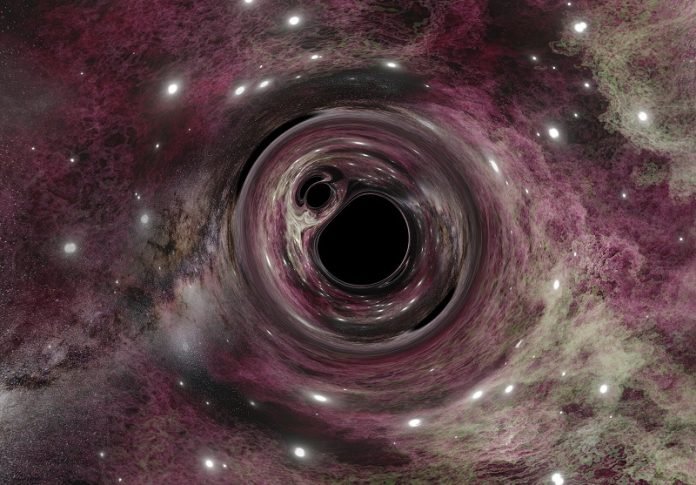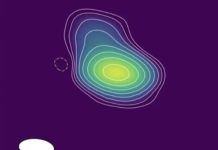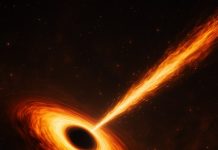
Black holes, those enigmatic cosmic objects with gravitational forces so powerful that not even light can escape their pull, are one of the most intriguing mysteries of the universe.
Back in 2015, scientists made a groundbreaking discovery when they detected ‘ripples’ in the fabric of space itself, called gravitational waves.
These waves were caused by the merging of two black holes, revealing a brand new way to explore the universe.
Now, fast-forward to the present. Scientists have made an even more exciting prediction – there might be massive black holes, about 30 times bigger than our Sun, merging in galaxies just like our Milky Way.
This is a big deal because it challenges what we previously thought about black holes. The team of scientists from the University of Geneva, Northwestern University, and the University of Florida achieved this using a special code called POSYDON, which helps simulate how stars and black holes behave.
Their findings are published in the journal, Nature Astronomy.
Let’s break it down: black holes are formed when big stars, a few to a few hundred times the mass of our Sun, collapse on themselves.
The gravitational pull of these black holes is so strong that they suck in everything around them, including light. This makes it incredibly tough to spot them.
The detection of gravitational waves, or the ‘ripples’ in space caused by two black holes merging, back in 2015 was a significant milestone.
The black holes that caused the waves detected were massive, about 30 times the mass of the Sun, and they were located mind-boggling 1.5 billion light-years away!
The big question on scientists’ minds is – how do these merging black holes come into existence? Are they a result of two massive stars evolving together? Or are they a result of black holes in star-packed clusters bumping into each other by accident?
Or maybe there’s some other mechanism at work? These questions remain a topic of intense debate.
To help answer these questions, the team behind the POSYDON code has made big strides in simulating how binary-star systems (two stars orbiting around a common center of mass) evolve. They’re using this to bridge the gap between theory and observational data.
Simone Bavera, a post-doctoral researcher at the University of Geneva and a leading author of the study, explains that it’s impossible to directly observe the formation of these merging black holes, so simulations are essential.
POSYDON leverages a large library of detailed star simulations and uses machine learning (a type of artificial intelligence) to predict how binary systems will evolve in less than a second.
What makes POSYDON really cool is that it has suggested that massive black holes – as big as 30 times the size of our Sun – could exist in galaxies like the Milky Way.
Previous models didn’t anticipate this, as they overestimated certain factors, like how much stars expand, which affects how black holes merge.
Thanks to POSYDON’s more accurate predictions, we now have a fresh perspective on how merging black holes might form in galaxies like ours.
This is just the beginning! The team is currently developing an even better version of POSYDON, which will include even more detailed simulations and will be able to simulate black holes in a wider range of galaxy types.
Stay tuned for more fascinating discoveries in this cosmic detective story!
Source: University of Geneva.



